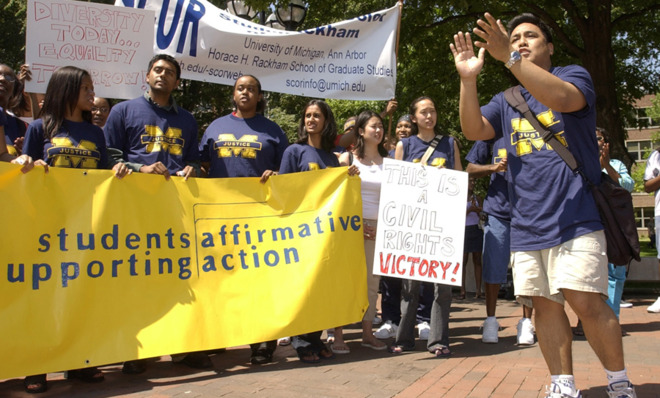
Recent decisions made on both California Proposition 209 and Michigan Proposition 2 have sparked a bit of controversy in the field of education. Both Propositions ban factoring in racial preferences in matters of public programs and the most noted industry addressed has been higher education. The Supreme Court has ruled that both Propositions will hold. The decision was not an easy one, as several judges disagree to what degree it should be considered constitutional. In a fifty-eight-page statement submitted by Justice Sonia Sotomayer, the concept of minorities struggling to be accepted into prestigious colleges and universities was discussed at length. However, in this entire directive, Asian Americans were not mentioned once. An article recently completed by Forbes addresses the lack of consideration for this particular minority and the affects it is having on the nation.
Despite the assistance from California Proposition 209 and Michigan Proposition 2, Asian Americans have held adamant to the fact that they continue to be discriminated against in terms of admission to further educational endeavors. To contest this fact, several lawsuits were submitted in 2012 to the United States Education Department. Studies were conducted and found that there is a separate standard held by admissions officers for Asian Americans. These students need to score one hundred and forty points above the average Caucasian score on the SATs; a three hundred and ten point surplus over African American students is required to be accepted. This sets a nearly unattainable standard against the Asian American applicant population.
However, some universities are moving to abolish this conception. University of California Berkeley had an accepted Asian population of just over forty two percent. Hispanic and Latino minorities also had a big increase, climbing from three percent to just under twenty one percent. This trend shows hope that the standards may be changing, regardless of the Supreme Courts ruling.